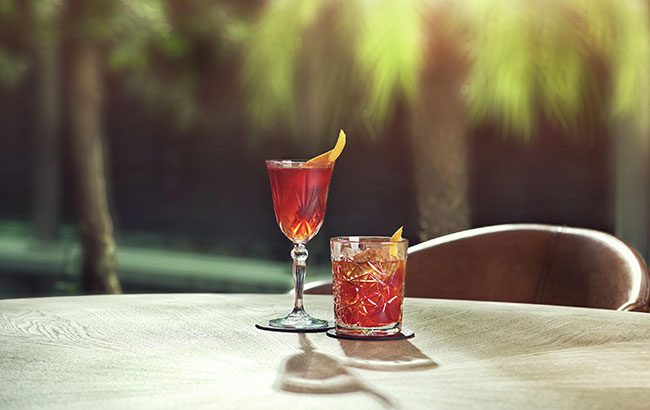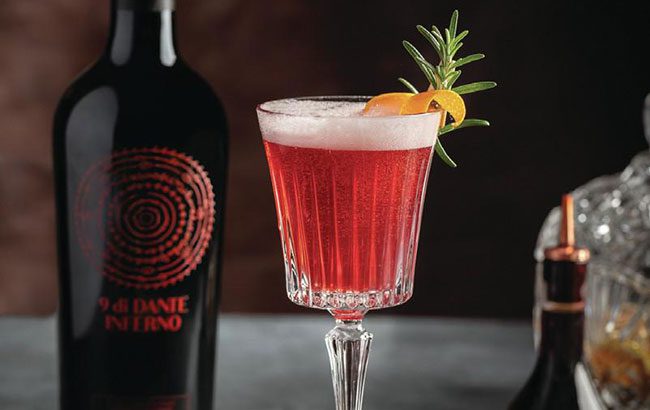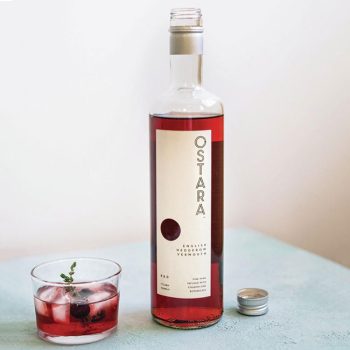On trend: vermouth taps into education
By Claire DoddBrands are clamouring to capitalise on trends by offering vermouths. But do consumers understand the drink?

*This feature was originally published in the December 2022 edition of The Spirits Business magazine.
TikTok has a lot to answer for. Yet among the challenges and viral videos that populate the site, along came the Negroni Sbagliato – a twist on the Negroni that replaces gin with Prosecco. Actor Emma D’Arcy certainly didn’t mean to start a trend when asked what their favourite drink was. But their delivery and perfect pronunciation, has propelled it to meme status. The original clip now has more than 100 million views, introducing the serve to legions of new consumers.
It’s a rather neat, if bizarre metaphor for where we find ourselves with vermouth. This once staid category is now enjoying a renaissance, buoyed by the soaring popularity of cocktails such as the Martini and Negroni, to which it is central.
Bars are now using it as a star ingredient, rather than a background one, playing on nuances of different varietals and specific botanicals. “With the current trend for low-alcohol drinks, vermouth allows guests to have a complex beverage that is light in ABV and sugars, but still full in flavour and complexities, such as a good vermouth and soda,” says Omar Caimi, head bartender at Nightjar Carnaby in London.
When it comes to new products, there’s been much activity. With their eyes on serves, classic brands have been adding new styles to their lines. In late 2021 Italy’s Cocchi introduced Extra Dry (17% ABV). Managing director Roberto Bava says: “It’s been a long process, and it took a lot of work to create a vermouth that would have personality without overpowering the delicacy of a gin and vodka.” It also celebrated 130 years of production with the limited edition Barolo Chinato, formulated to a 19th‐century recipe.

Newer brands such as Cucielo have added lines aimed at trending serves. Its Dry Vermouth di Torino, launched in June, is intended for use in Martinis. There’s been a flurry of bartender‐created products too. In 2021, Villa Massa added Vermouth Giardino Tradizionale Rosso and Mediterranean Dry, formulated by Zamora Company alongside a bartender‐led team, and designed for mixing. Earlier launches include Schofield’s Vermouth, Otto’s Athens Vermouth from the team at The Clumsies bar in Greece’s capital, and Baldoria Vermouth, created by Bonomy Group, owner of Paris’ Little Red Door.
Meanwhile, Pernod Ricard entered vermouth in late 2020 by taking a majority stake in St Petroni owner Vermutería de Galicia. And Provence wine brand Mirabeau partnered with Vault Vermouth.
New global styles are also emerging, tapping into botanicals unique to their locales. Beyond the heartlands of Italy, France and Spain, there are now producers in Germany, Belgium, the US, Australia and an ever‐growing number from the UK.
According to Roberta Mariani, Martini global brand ambassador, much of the growth in vermouth is stemming from that unwavering mega-trend, moderation. “Nolo and apéritifs are forecast to grow by 9% by 2026 to US$25 billion, accordingly to IWSR 2021 data,” she says. “So we shouldn’t be surprised that today any Italian spirits producer is adding a vermouth to its portfolio. And while some allegedly old recipes belonging to grandmothers are being brought back to life, we also see products focused on local ingredients and new styles of vermouth being created.”
But, there’s a problem. With so much new product development focused on vermouth’s place as a foundational ingredient of trending serves, have brands overlooked showcasing the category to consumers, explaining what it is and how to consume it in its own right?
“There’s a tricky communication piece with vermouth, which is one of its biggest Achilles’ heels,” says Dan Gasper. The Distill Ventures co‐founder recently launched the Ardent Company, an independent drinks accelerator focused on investing in the low- and no-alcohol space, as well as spirits.
Limited awareness

He argues that though consumers are looking for lower‐strength serves, they have limited awareness of vermouth and how to drink it. Limited understanding of the number of varietals and their differing names puts further barriers to purchasing.
“Trying to explain the word vermouth is probably your biggest barrier,” he says. “Where a lot of brands struggle is that they try to answer their relevance to the trade first and forget the consumer.
“Consumers don’t have this rich knowledge that the trade has; that vermouth isn’t just something to use in cocktails, what it’s made from, what the different liquids are. There are lots of large companies that could be building the category. But they’re not. Whoever does explain that a vermouth and soda is a delicious drink to consumers and is half the strength of a gin and tonic – that seems to me a great opportunity.”
“On its own, vermouth isn’t the most sessionable liquid,” says Davies. “The category norms are also quite confusing. That’s either daunting or an opportunity.”
From overcrowding in the gin category to a desire for lighter serves, he sees vermouth as the logical next trend. But that mainstream potential can only be unlocked by brands that take a new approach.
Available in Red and White, Ostara is marketed on its British roots and use of local, countryside‐focused botanicals, from damsons to bilberries. It contains up to half the amount of sugar of leading brands, according to Davies. “One reason I wanted to get into vermouth was because it provides an opportunity to be genuinely innovative and offer something different,” he adds.
“By design, and by strategy, I’ve tried to make it more accessible, lighter, easier to drink more of, more understandable; I want people to be drinking it neat or with tonic, as well as in cocktails. Vermouth has suffered from people not quite knowing how to drink it. My biggest challenge is to get as many people as possible to taste the product.”
Related news
SB's 12 Drinks of Christmas: Skrewball
